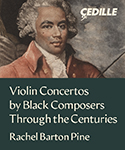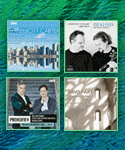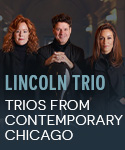Chinary Ung, born in 1942 in Cambodia, is now one of the most respected living American composers. These four compositions are typical of his work, being primarily in Western musical vocabulary but with elements of Asian musical thinking. For instance, Spiral VI (1992) starts with notes that outline a diminished-seventh chord. But the music unfolds heterophonically, typical of many Asian music styles. Each of the four instruments (violin, clarinet, cello, and piano) seems to be improvising on the same basic material, but there always are differences between any two parts so they never match up exactly. Next to this effect, the occasional bit of Asian color–a bent pitch here, a pentatonic structure there–is much less important in evoking a sense of the music’s underlying Asianness. The four players–a quartet billing itself as “Quake”–seem to have deep commitment to and understanding of the music, and, as is also the case with the two following works, the performance is recorded in a very good studio ambience.
A solo piano work, Seven Mirrors (1997), is the most Western sounding composition on the disc, even though the inspiration is specifically drawn from Indian writers Rabindranath Tagore and Jelaluddin Rumi. There are seven mystical titles that are the launching point of Ung’s musical mood, but otherwise the music is not programmatic. Gloria Cheng’s piano playing is poetic.
Grand Alap (1996), is written for amplified cello and percussionist. An alap is the typical opening section of an Indian raga. Ung uses a form that contains words in order to evoke a Southeast Asian tradition of addressing the departed spirits in words and syllables. The two musicians thus have to speak in addition to playing, often at the same time. John Kays’ exemplary notes explain that this is exceptionally difficult music, both technically and in maintaining continuity in a form that is a strand of fragmentary musical ideas. Nevertheless, there is no sense of difficulty in this breathtaking performance.
Grand Spiral is a concert band piece written in 1992, here played in the composer’s full orchestral version. A landmark of originality in the repertoire of its original medium, it remains a potent work in this guise. It spirals through successive tonal centers, while extensive use of percussion creates varied colors. However, much goes wrong in this recorded live performance. The orchestra members seem unfamiliar with Ung’s style, and there are numerous fluffs. Moreover, the recorded sound is boxy. Conductor Harvey Sollberger for years has been one of America’s most committed new-music conductors, but this performance fails to jell. The recording is welcome as a reference, and does convey an idea of the strength and imagination of the music, but only enough to make you want to hear it played better.
































